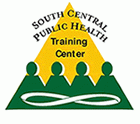
Conflict Management: Lessons From the Field
Course Description:
Conflict is a normal part of our everyday life both at home and in the workplace. Mismanaged conflict has both direct and indirect costs as it decreases productivity, increases problems with morale and increases liability. Conflict management is a constructive way of approaching this natural phenomenon so that the result is a positive outcome.
In this broadcast a real-life approach to conflict management was provided as specific scenarios, sent in by viewers, were addressed to a panel of Human Resources experts. The panel discussed each submission as a case study. Viewers were also invited to join the discussion during the broadcast by calling to talk with our experts. All emails and calls were handled anonymously so that, together, the panel and the viewers were able to discuss successful conflict management strategies.
Note: This course was originally delivered as a satellite broadcast.
Target Audience
Academic Faculty/Staff, Federal Government Employees, State Government Employees, Local Government Employees, Non-Government Employees and Students
Learning Objectives
- Define conflict and conflict management
- Describe how to structure a conflict management process
- Understand the importance of successful conflict management in the workforce environment
- Feel more confident about approaching conflicts
Instructors:

Kathy Vincent, LCSW
Staff Assistant to State Health Officer
Alabama Department of Public Health

Michele Jones, MS
Deputy Director
Bureau of Professional and Support Services
Alabama Department of Public Health

Josh Klapow, PhD
Associate Professor
Department of Health Care Organization and Policy
South Central Center for Public Health Preparedness
University of Alabama at Birmingham
Available Credit
- 2.00 Participation/CETulane Professional and Continuing Education (PaCE) awards 2.00 hour(s) of credit for completing Conflict Management: Lessons From the Field
Price
Required Hardware/software
System Settings
This course is designed to work most effectively if your computer and internet connection meet certain minimal requirements. This course can be accessed using a Windows 10 PC or a Mac with High Sierra1, Mojave, or Catalina. Pop-up blockers should be disabled when viewing the course. Internet Explorer 11 (for Windows 10), or the current version of Google Chrome, Mozilla Firefox, or Apple Safari (for Windows 10 and or Mac) is required. Many of our courses require Java and JavaScript enabled.
Links to External Websites
Links to websites outside this course will open in a new window or tab. Some browsers may minimize the course window. If this occurs, maximize the course window to return to the course.
Adobe Acrobat Reader (for desktops and laptops)
Adobe Acrobat Reader is required to access some documents in this course. If you need to download a free copy of Acrobat Reader, click here.
Internet Connection Speed
A minimum download speed of 1.5 Mbps is recommended for an optimal experience, which is commonly the speed associated with a basic DSL or a cellular/satellite connection. A faster connection, such as cable or fiber service, with further enhance your online experience. A Wi-Fi connection is generally acceptable, but it is dependent upon one of the two services mentioned above. You can check your internet connection speed at http://www.speedtest.net/.

 Facebook
Facebook Twitter
Twitter LinkedIn
LinkedIn Forward
Forward